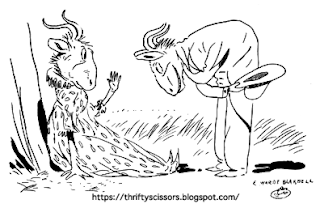 |
| The alpaca has soft silky wool. |
Alpaca, a cud-chewing animal of the camel tribe, a native of the Andes, especially of the mountains of Chile and Peru, and so closely allied to the llama that by some it is regarded rather as a smaller variety than a distinct species. It has been domesticated, and remains also in a wild state. In form and size the alpaca approaches the sheep, but it has a longer neck. It is valued chiefly for its long, soft and silky wool, which is straighter than that of the sheep, and very strong. The wool is woven into fabrics of great beauty. All of these are known as alpaca, and they are used for shawls, clothing for warm climates, coat-linings and umbrellas. The flesh of the alpaca is pleasant to eat and is wholesome.
More About Alpacas From The Web:














